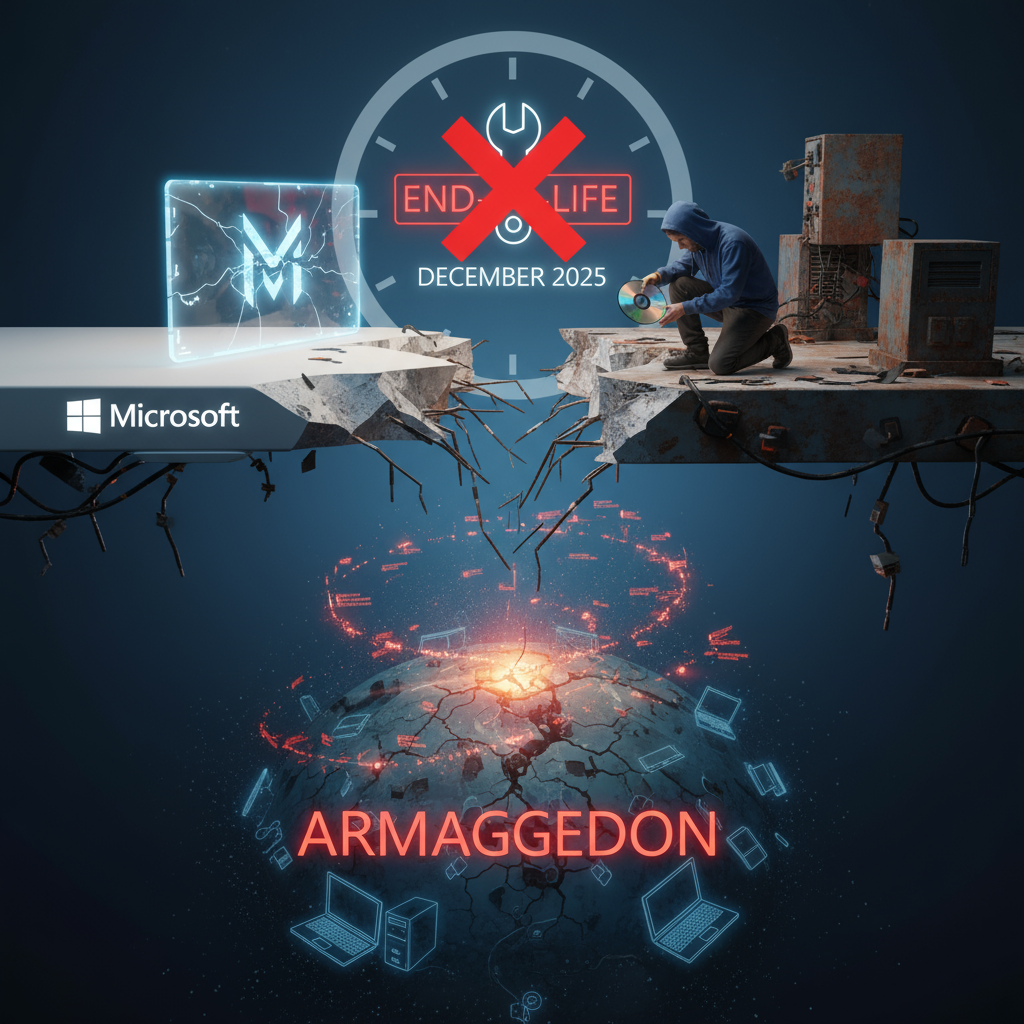Windows 10’s Grand Finale: Microsoft Breaks Its Own Upgrade Path — A Timely Twist for End-of-Life

As the final curtain draws closer for Windows 10, with its official end-of-life date looming on October 14th, a peculiar and rather ironic twist has emerged. Microsoft, in an unexpected turn of events, has seemingly scuttled its own upgrade process. Reports indicate that a recent update, distributed on September 29th, inadvertently broke the indispensable Media Creation Tool – the very utility many users rely on to transition to Windows 11. This isn’t just a minor glitch; it’s a significant disruption that directly impacts users trying to navigate the complex waters of OS migration in the eleventh hour.
The company has acknowledged the issue, admitting that the Windows 11 upgrade tool “might not work as expected” and, perhaps more surprisingly, has begun outlining alternative upgrade routes. This timing couldn’t be more dramatic, leaving many users scratching their heads and scrambling for solutions as the clock ticks down. Let’s delve into what this means for Windows 10 users and explore the implications of Microsoft’s unexpected hiccup.
The Broken Bridge: What Happened to the Media Creation Tool?

For years, the Media Creation Tool has been a steadfast companion for Windows users. It’s the go-to utility for everything from creating bootable USB drives for fresh installations to performing in-place upgrades. Its ease of use and reliability have made it a cornerstone of Microsoft’s software distribution strategy. However, a recent update, pushed out just weeks before Windows 10’s end-of-life, appears to have introduced a critical flaw.
Users attempting to use the tool to initiate a Windows 11 upgrade are reportedly encountering various errors, leading to failed installations and frustrating setbacks. This isn’t a problem with isolated machines or niche configurations; the widespread nature of the reports suggests a systemic flaw introduced by Microsoft itself. The timing of this bug is particularly jarring, as the Media Creation Tool is often the preferred method for users who want to bypass the automated Windows Update process or troubleshoot upgrade issues.
Microsoft’s confirmation of the issue, while transparent, doesn’t immediately solve the predicament for those relying on the tool for a smooth transition. It highlights a potential lack of rigorous testing for critical end-of-life utilities, or perhaps an oversight in how recent updates interact with legacy systems.
Microsoft’s Confirmed Hiccup and the Search for Alternatives
In a candid admission, Microsoft has acknowledged that the Windows 11 upgrade tool “might not work as expected” for some users. This polite phrasing belies the frustration many are experiencing. While the company hasn’t detailed the exact technical nature of the bug, the implication is clear: the most straightforward path to upgrading for many is currently compromised.
However, Microsoft isn’t leaving users entirely in the lurch. They’ve begun to outline alternative methods for upgrading to Windows 11. These alternatives typically involve using the Windows 11 Installation Assistant, directly downloading the Windows 11 ISO file, or relying on standard Windows Update channels, provided the system meets the minimum requirements. Each of these methods comes with its own set of considerations and potential challenges.
For example, relying on Windows Update assumes your system is fully compatible and that the update will be offered automatically. The Installation Assistant is a good option for many, but some users prefer the flexibility of a bootable USB created by the Media Creation Tool. Directly downloading the ISO requires more technical know-how for creating bootable media, which might be a hurdle for less experienced users.
Navigating the Upgrade Maze: What Windows 10 Users Should Do Now
With Windows 10’s end-of-life just around the corner and the Media Creation Tool on the fritz, what should concerned users do? The first step is to assess your current situation. Do you plan to upgrade to Windows 11, or will you continue using Windows 10 despite the lack of future support? If you intend to upgrade, here are the revised strategies:
- Check Your System Compatibility: Before attempting any upgrade, download and run Microsoft’s PC Health Check app. This tool will tell you if your system meets the minimum requirements for Windows 11. If it doesn’t, upgrading might not be an option, or it might require hardware upgrades.
- Utilize the Windows 11 Installation Assistant: If your system is compatible, this is now one of the most direct and recommended paths. You can download it directly from Microsoft’s website. It’s often simpler than a full ISO installation.
- Download the Windows 11 ISO: For advanced users or those who prefer a clean installation, downloading the official Windows 11 ISO file is a viable option. You’ll then need a third-party tool like Rufus to create a bootable USB drive.
- Backup Your Data: Regardless of your upgrade method, always, always, always back up your important files and documents before initiating a major operating system change. This is the golden rule of computing and can save immense heartache.
- Consider the Risks of Staying on Windows 10: If you choose not to upgrade, be aware that after October 14th, your Windows 10 system will no longer receive security updates. This leaves it vulnerable to new threats and exploits, posing a significant security risk for continued use.
The situation underscores the importance of not waiting until the last minute for critical system changes. While Microsoft typically provides robust tools, even the tech giant can stumble, especially when deadlines loom.
Conclusion: A Rocky Road to Windows 11, but Paths Remain
Microsoft breaking its own Media Creation Tool on the cusp of Windows 10’s end-of-life is a fascinating, if frustrating, development. It’s a testament to the complexities of software maintenance and distribution at scale, even for a company as large as Microsoft. While the ideal upgrade path for many has been temporarily disrupted, it’s crucial for users to remember that alternative routes to Windows 11 still exist.
This incident serves as a crucial reminder for all Windows 10 users: the clock is ticking. Whether you choose to navigate the slightly more challenging upgrade path to Windows 11 or decide to remain on an unsupported Windows 10, understanding the implications and preparing accordingly is paramount. The journey to Windows 11 might have acquired a few unexpected bumps, but with informed action and a bit of perseverance, a smooth landing is still achievable.

